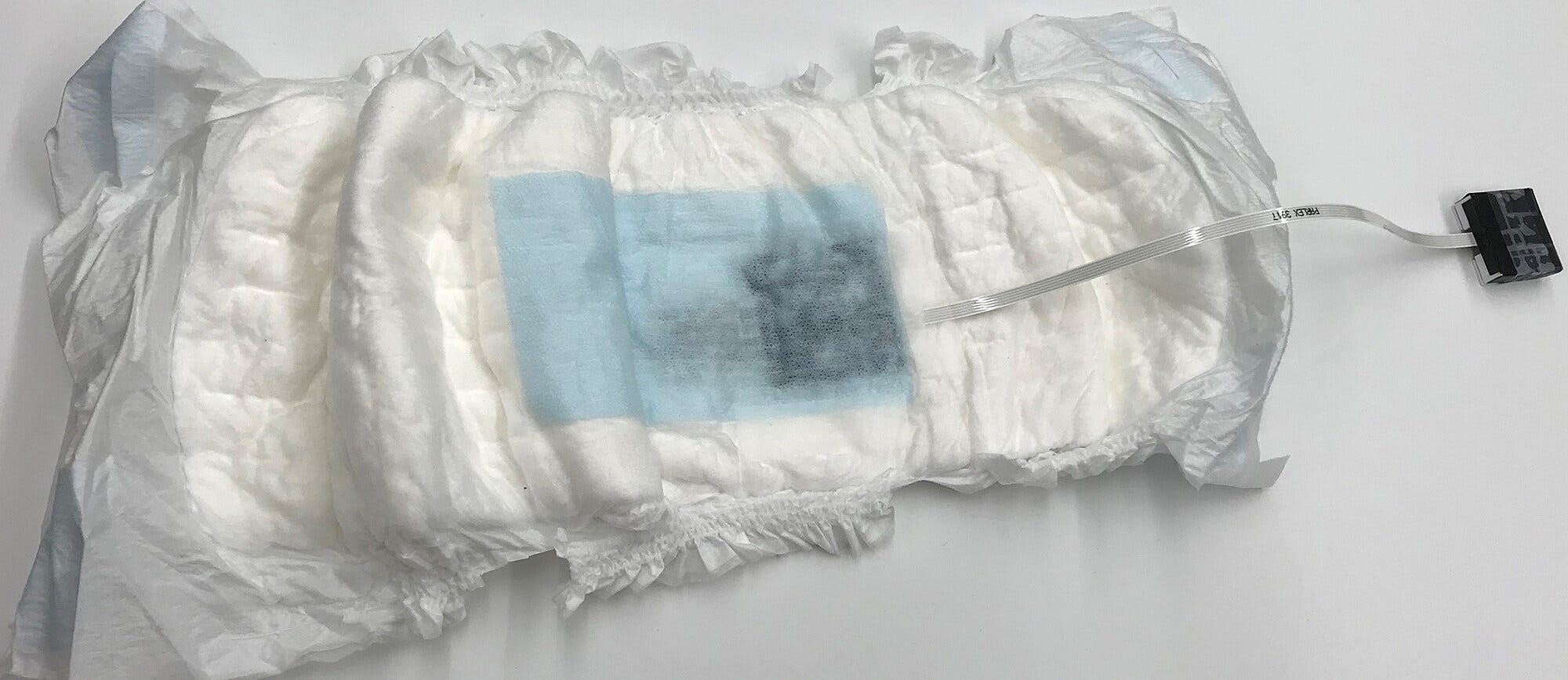UTI Sensor for Diapers Nears Commercialization
 Ziaie believes the elderly—especially those with dementia
Ziaie believes the elderly—especially those with dementia
Subscriber Benefit
As a subscriber you can listen to articles at work, in the car, or while you work out. Subscribe NowUrinary tract infections (UTIs) are one of the most common infections in elderly and children, yet these two groups may also be unable to alert caregivers when they have symptoms. A Purdue University researcher has developed a tool to safeguard against children and elderly suffering from the elusive infections. Dr. Babak Ziaie has created an autonomous, disposable diaper sensor that can detect a UTI and automatically alert caregivers on their smartphone.
Ziaie believes the elderly—especially those with dementia, Alzheimer’s disease or living in nursing homes—could benefit most from the diaper sensor, as they may not be able to tell someone if they’re experiencing symptoms of a UTI.
“Society is getting older; we’re going to have more and more elderly. People with Alzheimer’s and other cognitive disorders are on the rise, so we’re going to have a lot of users, unfortunately,” says Ziaie, who is a professor of electrical and computer engineering. “We’re ready to give [this technology] to a company and say, ‘Guys, go make this and get it into customers’ hands.’ It’s a very unique product.”
It’s important to detect UTIs quickly, because the infections can spread and develop into far more serious conditions. UTIs are a leading cause of sepsis, a potentially life-threatening infection of the bloodstream. Additionally, UTIs are becoming increasingly resistant to antibiotics; some standard treatments are no longer effective, underscoring the need to detect infections early.
Ziaie’s tool has two key components: a sensor that is placed within the lining of a diaper and a small electronic unit—about the size of Tic Tac container—that clips to the outside of the diaper or the user’s pants. The sensor that’s placed inside the diaper is disposable; urine activates its battery to detect nitrites in the urine, which indicate a UTI. A small strip connects the sensor to the external electronic unit; if nitrites are detected, the system uses Bluetooth to send an alert to the patient’s or caregiver’s smartphone.
Ziaie says the system is a critical tool for detecting UTIs in elderly and infants, because current methods require a clinic or office to test a urine sample, which can be extremely difficult to obtain from someone who is dependent on diapers. Even over-the-counter test strips to be used at home require obtaining a urine sample.
“[The sensor system] is going to be a separate unit you can buy from a drug store, and you basically attach it. Then, you throw it out,” says Ziaie. “You don’t need to use it in every diaper, but it could be used a couple times per week to screen people.”
Ziaie is working with Dr. Byunghoo Jung, also a Purdue professor of electrical and computer engineering, to develop the technology. After five years of perfecting the device in the laboratory and patenting it, Ziaie believes the tool is ready for commercialization.
“We’ve shown that it works, and we’ve shown the sensitivity and accuracy,” says Ziaie. “There are several companies we’re in active discussions with right now to license it. It has to go to someone to start manufacturing it on a large scale, go through [regulatory approvals] and sell it.”
Ziaie believes the team will ink a deal with a company later this summer or in the fall. He’s confident both the tool’s novelty and great market need will make it a success.
“This device has a real market, a need, and there are people who want to use this. It can make people’s lives better,” says Ziaie. “I’ve worked on a lot of other devices where we’ve had competitors…but this is just us. We have a big advantage; there’s no other device like this on the market that I know of, or even in academia. Of all the things I’ve worked on over the years, this is the most exciting device.”
Ziaie says the team explored having the sensor integrated into the diaper manufacturing process.
Ziaie says the sensor in the diaper is disposable, but the electronic component is reusable.
